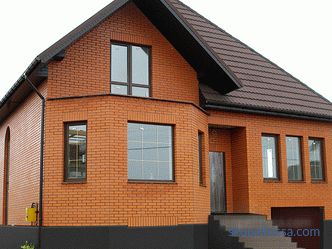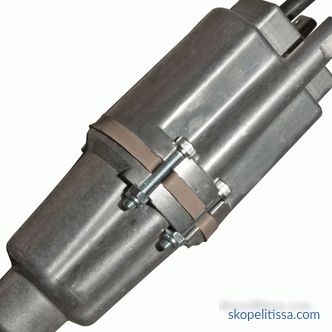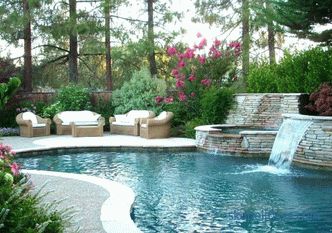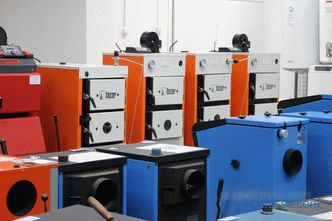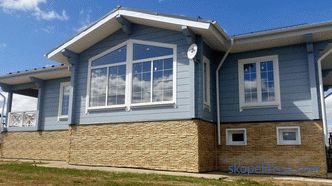High-quality insulation of the facade of the house outside allows you to maintain the microclimate in the living room at a comfortable level by reducing heat losses in the cold and excessive warming in the hot summer. The owner of the house gets the opportunity to save on heating or air conditioning. There are many ways to insulate the exterior walls of a house based on various materials, and the main task is to choose the best option.
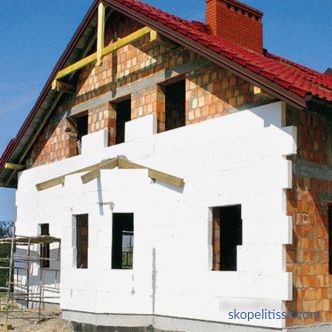
Advantages of the warmed facade
Imposing additional layers on the outer surface for building insulation allows:
- To prevent premature destruction of walls from exposure to aggressive natural environment.
- Improve the appearance of the house.
- Eliminate condensate on the inside walls.
- Reduce noise penetration.
- Reduce the heat exchange between the outside and inside of the house.
The facade can be warmed on its own, although this is a time consuming and complex process, and mistakes are difficult to fix and reduce the expected effect many times. At the same time, there are a huge number of companies offering their services in this direction. The main thing is to find one that will provide the necessary quality for a reasonable price.
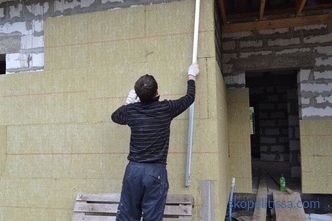
Material-insulation
Materials for insulation of facades differ in quality, method of attachment to the wall, the price. Basic requirements:
- Adequate thermal insulation performance.
- Long service life.
- Durability, water resistance.
- Not to be a suitable habitat for rodents and other living organisms.
Also, the choice should take into account the thickness of the walls, which may vary in different parts of the house. Consider that the insulation of the southern wall does not require the use of thick layers.
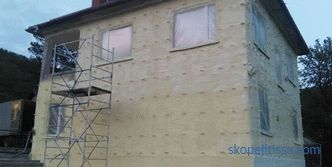
It should be emphasized that all of the heat insulators listed below are very popular and effectively prevent heat transfer.
Polyfoam
It is divided into several types:
- pressless;
- press;
- extruded, the most resistant to damage.
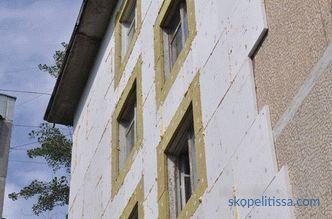
Benefits:
- Lowest price.
- Easy installation process.
Disadvantages:
- Crumbles, breaks.
- Absorbs water and collapses at sub-zero temperatures after it freezes.
- Does not absorb sound waves.
- Suitable for rodents.
It is recommended to use high-quality waterproofing at the same time. The rigid structure allows you to apply plaster or glue lightweight ceramic plates. It will last about 20 years.
On our site you can find contacts of construction companies that offer home insulation services. Directly to communicate with representatives, you can visit the exhibition of houses "Low-rise Country".
More information about foam insulation - in this video:
Mineral Wool
These are inorganic fiber plates, made of silicate waste, metallurgical slag, sediment mixtures. There are several types:
- glass wool (the lowest thermal conductivity);
- stone (basalt);
- slag wool (rarely used).
Mineral wool, made in the form of rolls and plates, is suitable for wall insulation, but the latter are more preferable, since they have a more dense structure.
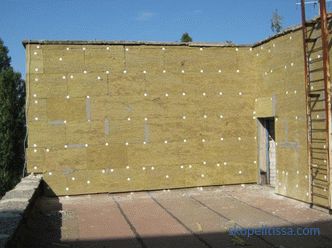
Advantages of insulation:
- Waterproof.
- Air exchange.
- Soundproofing.
- Fire resistance.
- The service life is 25-50 years.
Disadvantages:
- It should be protected from moisture, as it quickly absorbs water and loses thermal conductivity.
- Crumbles into fine dust (especially glass wool), so work is carried out in a respirator.
Mineral wool is used in conjunction with a reliable hydro insulator. It is fixed to the wall with glue or dish-shaped dowels. Basalt wool is more durable. The price is relatively low.
Ecowool
Made from natural cellulose, it is a truly environmentally friendly material, which is not the case with inorganic insulants, which definitely emit harmful substances, although in minimal doses.
Additional components - borax and boric acid, also mineral substances, protect the cellulose from rotting, rodents, increase fire safety.
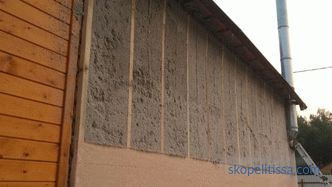
The loose structure of ecowool suppresses sound vibrations. The ventilating indicators of eco-wool, are comparative with natural wood, make it very attractive for warming wooden buildings.
A significant drawback - the material is applied using wet technology: wet ecowool is sprayed onto the facade.After evaporation of moisture, a dense and warm coating is formed, which adheres firmly to the surface. For finishing finishing plaster, magnesite tile, block house are suitable. Treats expensive heaters.
Dry spraying is possible only for frame structures that have voids between the exterior and interior.
Expanded polystyrene (penoplex)
Expanded polystyrene is often chosen for facade insulation. The material has many advantages, but it also has drawbacks that are worth studying.
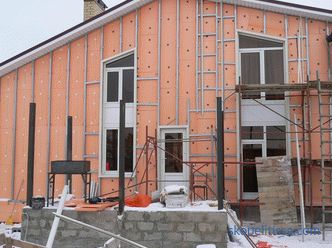
Pros:
- Light weight, 98% of air.
- Does not pass and does not absorb moisture.
- Resistance to deformation.
- Frost resistance, withstands sudden changes in temperature.
- The simplicity of the installation work that a novice is capable of carrying out is cut with a simple sharp knife.
- It guarantees a high effect, the cost of air conditioning and heating is reduced by 3 times.
Minuses:
- It only slightly mutes the sound.
- It is destroyed by chemically-active substances, under the action of ultraviolet rays.
- Ignition at a sufficiently low temperature of 210-440 0 s, with release of harmful substances (however, the presence of self-extinguishing indicators saves).
- Suitable for rodents: to avoid spreading, additional processing is required.
- Leaks moisture, at low temperatures, it turns into ice, which destroys the insulation.
The tongue-and-groove method of connection ensures a tight fit of the plates. Material prices are adequate for quality.
An advisable choice is that of expanded polystyrene thermopanels with a clinker tile, without the use of a finishing finish.
It can be interesting! In the article on the following link read about insulation for exterior walls of the house.
Polyurethane
It is a one- or two-component composition based on resin and hardener. It is applied by spraying on the surface, when cured it increases many times in size. After polymerization, the material is firmly glued to the wall, so there is no need for additional fastening.
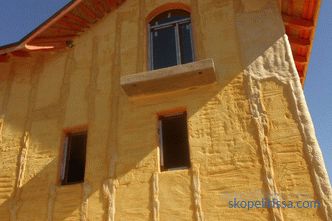
Advantages of polyurethane:
- It has the highest coefficient of thermal conductivity of all heaters.
- Speed of work.
- Tightness.
- 100% adhesion, only polyethylene and fluoroplastic surfaces are not suitable.
- Soundproofing.
- Watertight.
- Not suitable for rodent habitat.
- Does not emit harmful substances.
The main disadvantage is the complexity of the application technology. The process requires the presence of special equipment, strict adherence to proportions when the composition and temperature conditions are tuned. Practically not realistic to do the work yourself. It is easier to invite a team of masters who have mastered all the details of the process.
Insulation technology
Despite the different structure, properties and component components, all heaters are placed on the walls of the house in two ways:
- Wet. It guarantees a better attachment of the material to the surface. It is carried out only at positive temperatures.
- Dry. Availability of installation at any time of the year. Wins in the speed of work. But less tight to the wall, which increases heat loss.
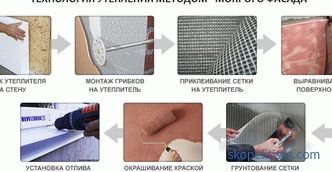
The technology of insulation depends on the type of finishing. For example, it is better to use a wet method for plaster and a dry method for siding.
Organization of insulation and finishing materials
The insulation of the house is carried out after:
- installation of the roof, windows, ventilation;
- finishing the foundation;
- shrinkage of the building.
Positive, dry weather is preferable.
The facade cladding is a multi-layer structure assembled in a specific sequence from different types of materials, each performing a specific function. An important factor than to warm the facade of the house outside. It largely determines the technology of the whole process.
Insulation for siding
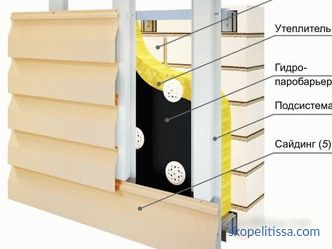
The sequence of works for dry insulation technology is as follows:
- A frame bearing system is used. In a two-layer installation with anchoring elements, vertical guides are fastened from a metal profile or a wooden bar, then horizontal, with the condition of overlapping joints.
- Heater is laid in rows, starting from the bottom of the wall.
- A windproof, vapor-permeable film is applied.
- Galvanized self-tapping screws screw the siding panels to a metal or wood frame.
With the wet method, the wall is put in proper condition, cleaned of dirt, leveled, then ground.Plates of insulation are placed on the starting profile, then glued, pressed with plate-shaped dowels to the wall. The starting profile is set on the bottom row, it does not allow the plates, until the glue is completely cured, slide down.
Ventilated hinged facade
This implies the presence of a ventilated space between the facing layer and insulation. In winter, warm air moves toward the cold through insulation, where it accumulates, which leads to an increase in humidity in the insulator. Additional ventilation reduces the amount of moisture to a minimum.
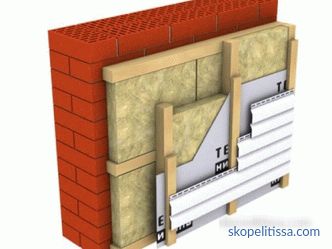
The installation of insulation is similar to the previous version. After the implementation of the above algorithm, a subsystem is installed that provides an air gap. Metal cassettes or porcelain stoneware suitable for cladding.
Decorative coating - plaster
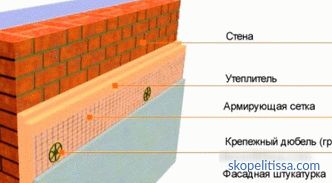
If plaster is chosen as the exterior finish, apply layers :
- adhesive mixtures, are applied directly to the walls of the house;
- insulation plates of the material chosen by the customer;
- reinforcing mortar;
- mesh of fiberglass;
- reinforcing mortar (another layer);
- primer;
- facade plaster.
Work is carried out in dry weather, with air temperatures above +5 0 C. Creating a neat beautiful layer of plaster is not easy, it requires skills and experience.
From a decorative point of view, plaster still loses to modern finishing materials, however, this option is environmentally safe and cost-effective.
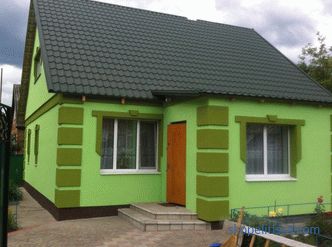
It might be interesting! In the article on the following link read about insulation penoplex.
Conclusion
Existing methods for insulating facades of private houses differ in installation technique, the total cost of work and materials, and they can significantly reduce heat transfer. Some work can be done by hand, others will require certain qualifications.
